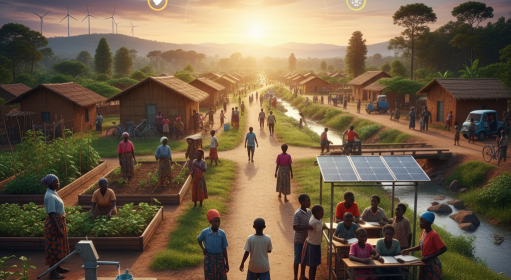The concepts of the Circular Economy and the 3 Rs—Reduce, Reuse, and Recycle—are integral to fostering sustainable waste management and resource utilization. While the 3 Rs focus on individual actions to minimize waste, the circular economy provides a broader systemic framework that aligns with these principles to create a sustainable economic model.
Circular Economy: An Overview
The circular economy is a systemic approach to economic development designed to benefit businesses, society, and the environment. Unlike the traditional linear economy—which follows a ‘take, make, dispose’ model—the circular economy is regenerative by design and aims to gradually decouple growth from the consumption of finite resources.
The circular economy is based on three key principles:
- Eliminate Waste and Pollution: By designing out waste and pollution from the outset, products are created with their entire lifecycle in mind, reducing environmental impact.
- Circulate Products and Materials at Their Highest Value: This involves keeping materials and products in use by reusing, repairing, refurbishing, and recycling them, thus extending their lifespan and reducing the need for new resources.
- Regenerate Natural Systems: The circular economy aims to restore and enhance natural ecosystems by returning valuable nutrients to the soil and other ecosystems, promoting environmental health.
The 3 Rs: Reduce, Reuse, Recycle
The “3 Rs” serve as foundational principles in waste management aimed at minimizing environmental impact:
- Reduce: Minimizing waste production is the most effective way to lessen environmental impact. Strategies include mindful purchasing, opting for minimal packaging, choosing digital alternatives, and avoiding single-use items.
- Reuse: Extending the lifespan of products reduces the need for new resources. This can be achieved by repurposing containers, donating or selling items, repairing broken objects, and upcycling old items into new, functional products.
- Recycle: Processing materials to create new products conserves resources and energy. Effective recycling involves understanding local guidelines, cleaning recyclables to prevent contamination, and purchasing products made from recycled materials.
Integrating the Circular Economy and the 3 Rs
The principles of the 3 Rs are embedded within the broader framework of the circular economy. By reducing consumption, reusing products, and recycling materials, individuals and organizations contribute to the circular flow of resources, thereby minimizing waste and promoting sustainability.
Practical Examples
- IKEA’s Circular Initiatives: IKEA has implemented programs to buy back used furniture, refurbish it, and resell it, thereby extending product lifespans and reducing waste.
- Deposit Return Systems: Countries like Denmark have implemented deposit return systems for beverage containers, achieving high return rates and promoting recycling.
- Adidas’ Recyclable Shoes: Adidas has developed shoes made entirely from recyclable materials, designed to be returned, broken down, and remade into new shoes, promoting a closed-loop system.
Implementing circular economy principles and mastering the 3 Rs requires collaboration among businesses, governments, and consumers to rethink product design, consumption habits, and waste management systems. By transitioning to a circular economy and adopting the 3 Rs, societies can work towards a more sustainable and resilient future.




